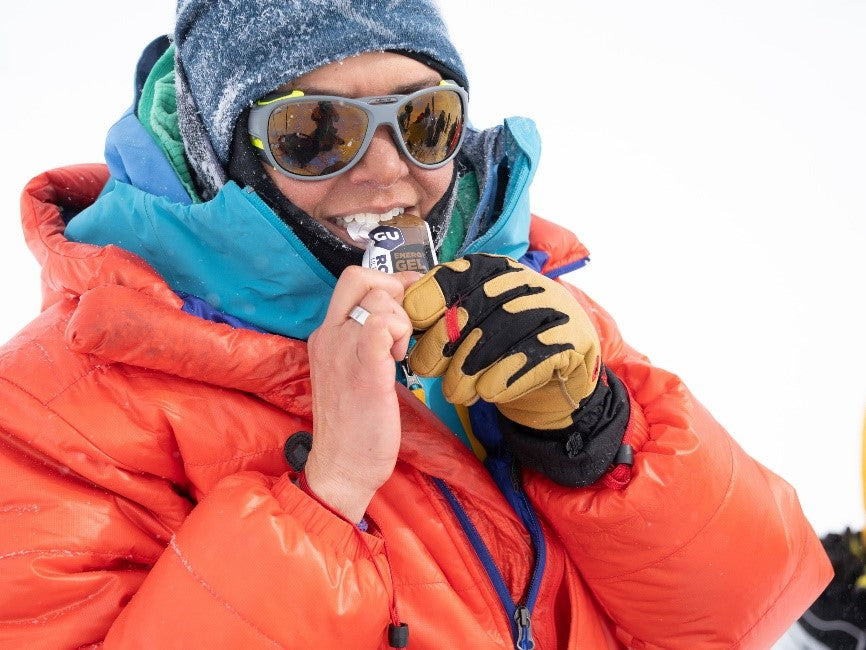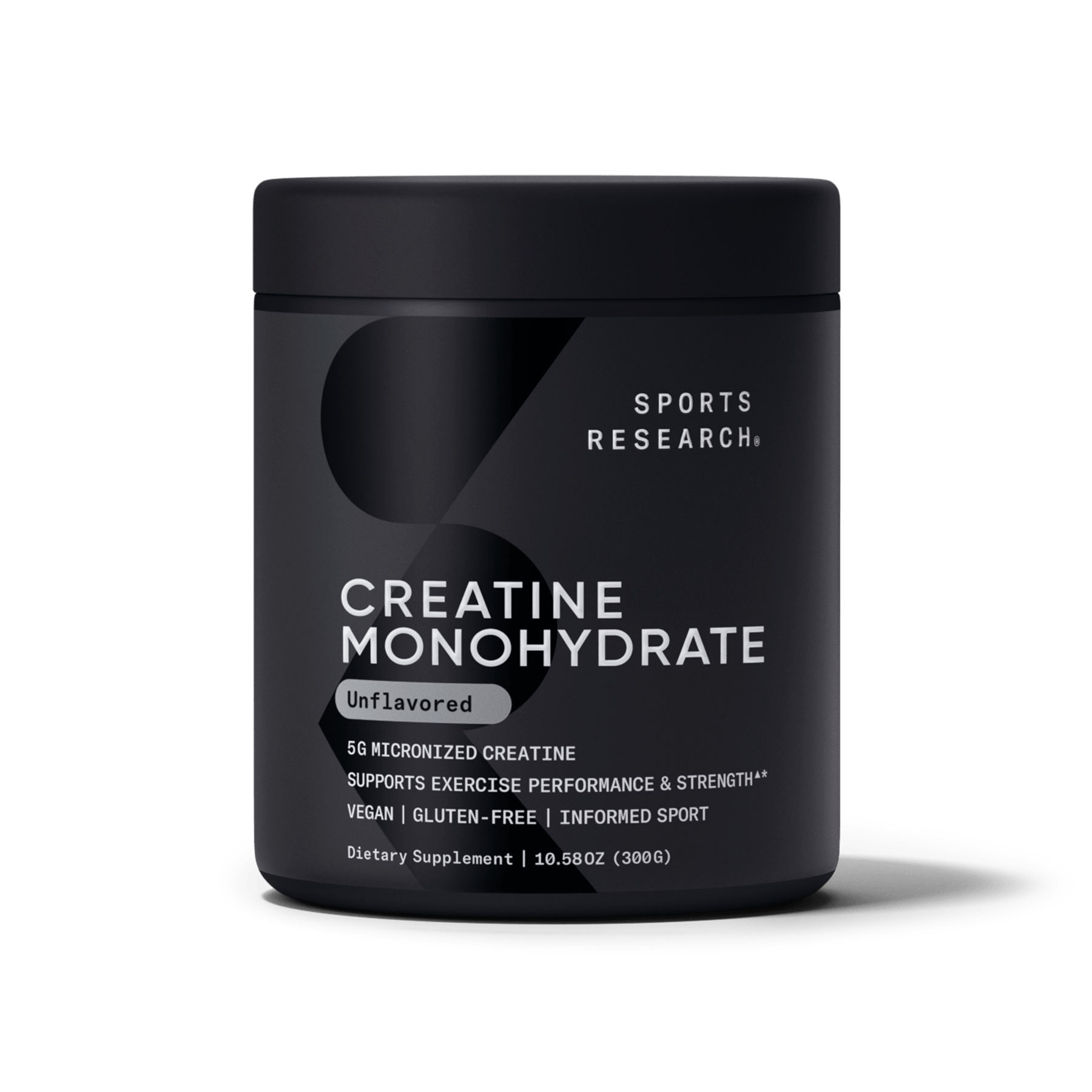Seven Nutrition Tips for Cold Weather Adventures
Let’s face it, being cold is not the most pleasant sensation. Your hands are about as nimble as a toddler using chopsticks, your nose becomes a leaky faucet, you risk breaking a crown on your favorite snacks, and staying topped up on nutrition becomes a challenge. While there’s nothing you can do to increase the outdoor temps this winter, you can stay warmer with adventure-ready snacks to fuel your cold weather pursuits.

First things first: What exactly happens to your body when it’s cold?
As the temperature drops, your body tries to stay warm by ramping up its metabolism and shunting blood flow away from less-vital regions like your hands and feet. With more blood flow toward your core, the muscles in your extremities receive less blood, resulting in a serious lack of dexterity (think of the last time you tried fastening your bike helmet or tying up your running shoes with cold hands). If you remain exposed to the cold without adequate insulation, the risk of cold injury - such as frostnip, frostbite, and hypothermia - increases. That risk increases further when you are improperly dressed, under nourished, and dehydrated.
How we stay warm: A brief review of the science
Shivering and non-shivering thermogenesis are the main ways we produce heat and stay warm during cold exposure. Both processes require energy, essentially “costing” us more in calories to stay warm than if we were indoors or in a less frigid climate. Spend enough time in the cold and you eventually acclimatize, largely by recruiting more “brown fat” which is a metabolically active form of fat that insulates us. We are born with a certain amount of this brown adipose tissue (BAT) – which, fun fact, is the same type of fat that keeps cold-water mammals warm – and it serves the important purpose of generating heat through a process that makes our mitochondria (powerhouse of the cell, where energy is created) ramp up their heat production.ref Got it?
Research on human metabolism has shown that cold exposure can increase caloric burn by as much as 350%.ref Bear in mind, this was observed during cold water immersion (one hour submerged in 14°C (57°F) water), which pulls warmth from your body faster than cold air, but the takeaway from polar research is similar: The colder you are, the harder your body works to stay warm, and the more calories you burn. And you need to replace those calories somehow.
The colder you are, the harder your body works to stay warm, and the more calories you burn.
So then what’s the game plan for cold weather nutrition? Here are some tips to help keep your furnace burning hot even as the temperature plummets.
1. Watch the water content. Foods lower water content are less likely to freeze, and therefore, less likely to break your teeth. Go for trail mixes, homemade energy bites, crackers and nut butter, fruit leathers or string cheese sticks. For weight savings, Stroopwafels are lightweight and durable, but calorically dense. Plus, they pair well with #2 on our list.
2. Always bring a thermos. One of the best ways to keep warm is by drinking your calories in hot liquid form. It warms your core and provides energy while preventing dehydration in cold, dry climates. On mountain trips, try your favorite electrolyte or sports drink mixes made hot, apple cider or (throwback alert!) Tang. Or, for those dawn patrol days, take a thermos filled with your tea or coffee and add some GU Energy gel (Salted Caramel in your coffee, anyone?), sweetener of choice, or MCT powder for calories. Instant soup packets also work well for longer days outside, plus they can help replenish some electrolytes (sodium) you lose during activity.
3. Choose savory flavors. When it’s cold out, savory foods can be more appealing because we associate them with being served at warm.ref Listen to your gut! Go for things like jerky (or try any number of vegetarian/vegan jerky products instead), nuts, seeds, dried chickpeas or other roasted pulses. Or, go super old school and make your own Pemmican, a favorite among turn of the Century polar explorers and Arctic natives.
4. Pack like a pro. Store your snacks close to your body to keep them warm. Similarly, insulate your liquids in a thermos, and if you insist on carrying water reservoirs, find a way to protect them so they don’t become virtually useless ice blocks. Finally, put those handwarmers to work in your pockets to make sure snacks that you plan to eat soon are good and warm.
5. Sip and nibble. Make a concerted effort to consistently snack and sip throughout the day. Take it from 7x World Champion Rebecca Rusch, who recently completed the Iditarod Trail Invitational 350 bike race in the frigid Alaskan winter: Eat early and eat often. Remember, you still dehydrate when its cold out, so drink proactively. Insufficient energy intake and dehydration increase your risk of injury and impair cognitive processes important to decision making and safety.ref
6. Pick a protein. Heard of the thermic effect of food? It’s the amount of energy needed to digest, absorb and assimilate nutrients once we eat them. While carbs and fat only “cost” us about 5-15% of the calories we eat, protein has a higher thermic effect, costing us 20-35% of calories consumed, resulting in a transient increase in heat production as we digest. (Turns out there’s some truth to the term “meat sweats” after all). So, if you consume a high protein diet or simply choose a protein-rich snack, you’ll temporarily ramp up your body temperature, helping you keep warm. Other foods that increase the thermic effect? Spicy foods like peppers and cinnamon.
7. (And this one is REALLY IMPORTANT.) Don’t eat the yellow snow. Better yet, don’t eat the snow, full stop. You never know where it’s been.
About the Author
Roxanne Vogel, PhD(c), CSCS*D, ACSM-EP CISSN, is the Nutrition and Performance Research Manager at GU Energy Labs where she oversees the brand’s Performance Lab and works with elite athletes to optimize nutrition for performance, health, and longevity. She is a PhD candidate studying Exercise Physiology, with a research focus on nutrition interventions to support human performance in extreme environments, including heat, cold, and high altitude. In May 2019 she became the first person to successfully summit Mt. Everest door to door in two weeks from her home in Berkeley, CA. She has spent the past 5 years conducting research on nutrition and its impact on body composition, athletic performance, and cognitive function.





